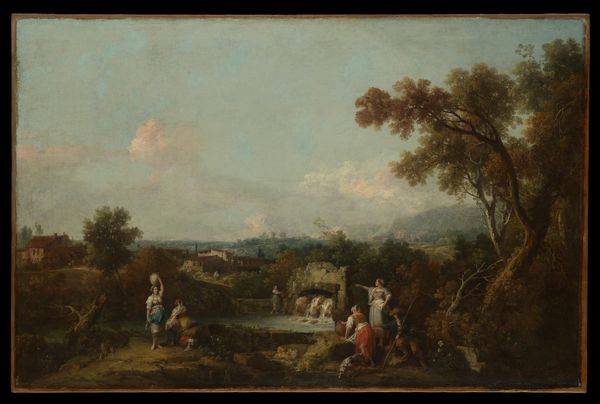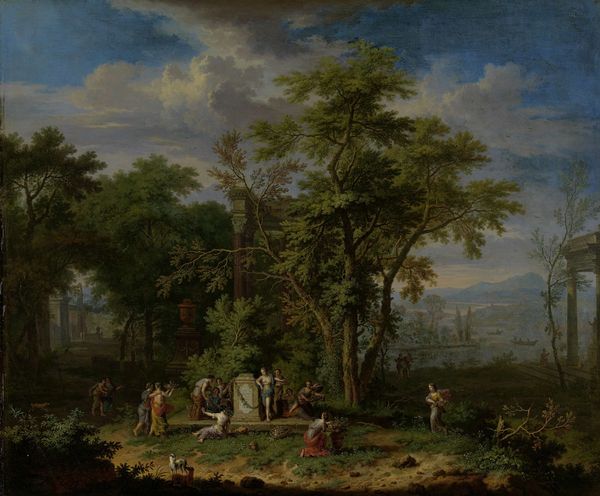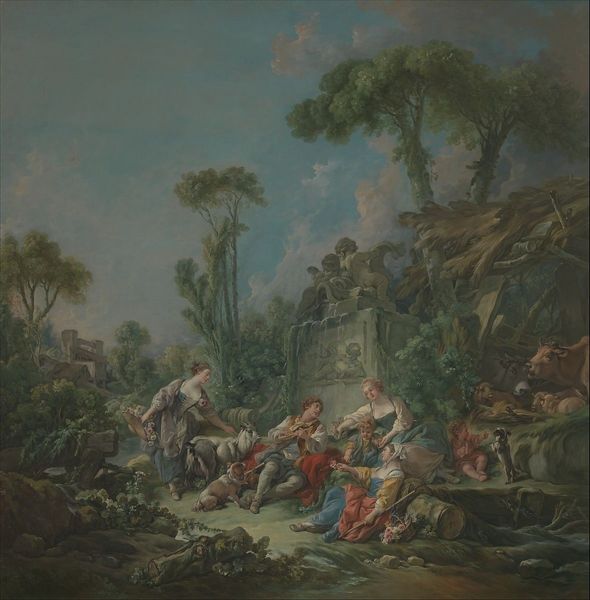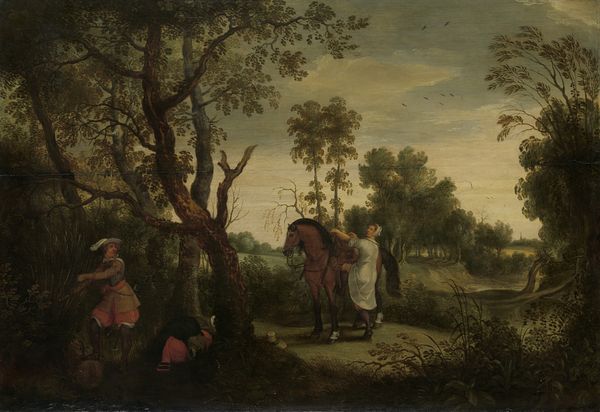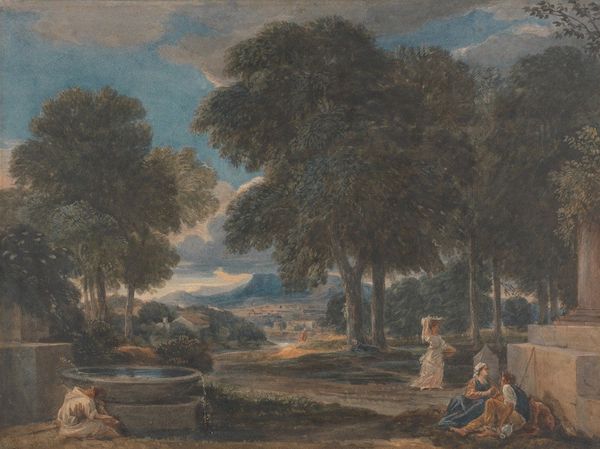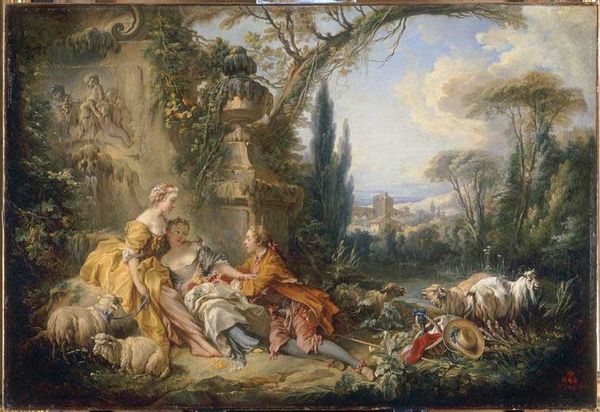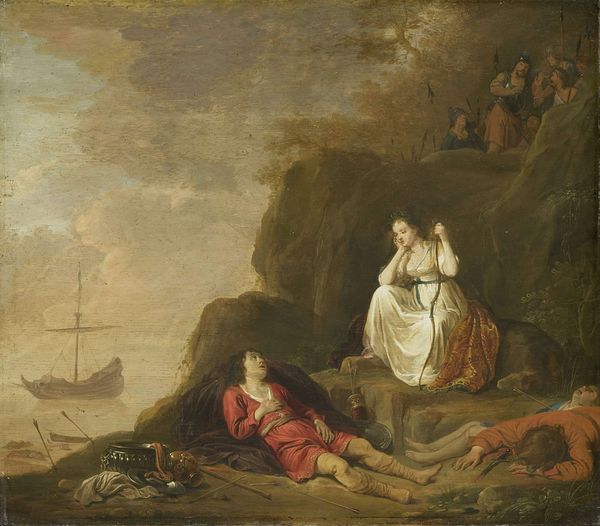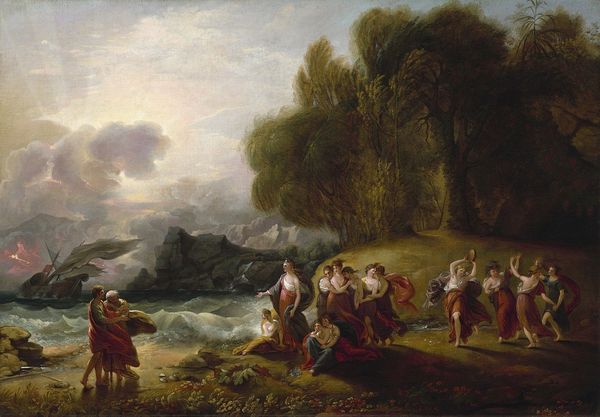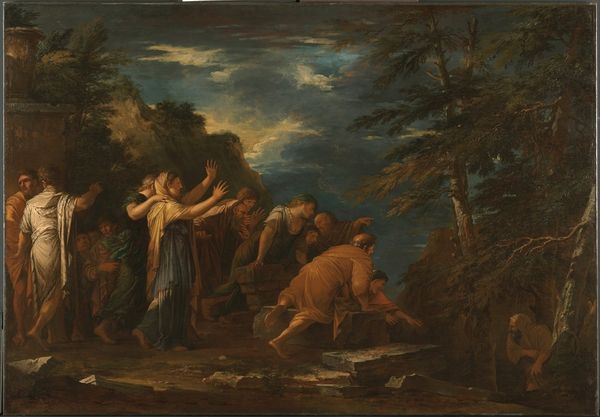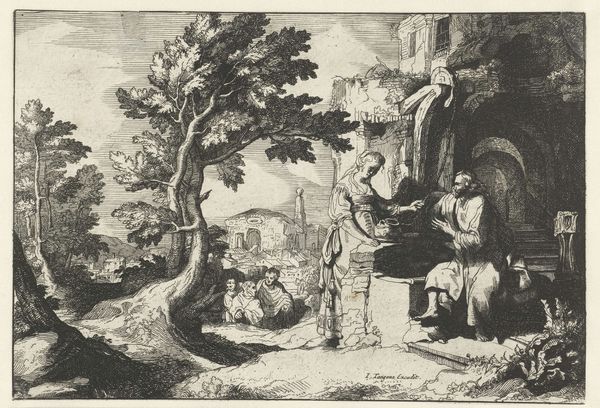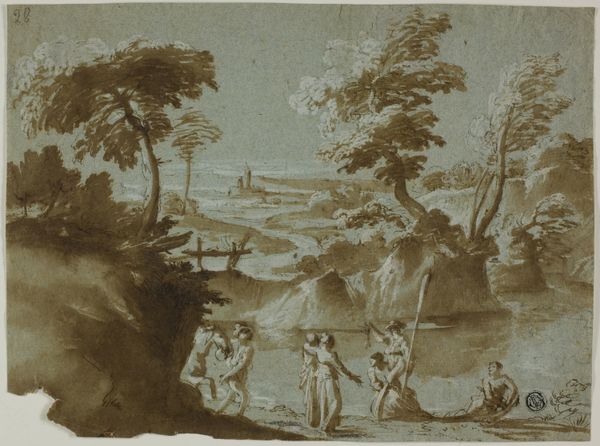
painting, oil-paint
portrait
baroque
painting
oil-paint
group-portraits
orientalism
genre-painting
Dimensions height 44 cm, width 58 cm
Curator: This is "Turkish Women in the Countryside near Istanbul," an oil on canvas believed to have been painted by Jean Baptiste Vanmour sometime between 1720 and 1737. Editor: The color palette really strikes me. It’s very dark overall, with these pops of vibrant color in the women’s clothing—it feels theatrical, almost like a stage set. And is that supposed to be an eagle in the sky? Curator: The artist employed a sophisticated composition here, framing the figures with a dark forest foreground that gradually opens to reveal the skyline of Istanbul. Note the attention to detail in the textile patterns. Editor: But is it really detail, or more like a generalized impression created for a Western European audience hungry for exotic depictions? The positioning of the women, especially, feels carefully curated to present a particular vision of Ottoman society—a romantic, perhaps distorted one. Are we complicit in perpetuating Orientalist fantasies by appreciating its aesthetic qualities alone? Curator: The question of authenticity is unavoidable in Orientalist art. Vanmour’s intention wasn’t necessarily documentary accuracy but a stylized representation that reflects the conventions and aesthetics of the time. We have to see the work as an artifact from a specific socio-political context with colonial implications. Editor: Exactly. How much can we separate Vanmour's visual language from the power dynamics at play? He wasn't just painting; he was participating in a broader system of representation that solidified European dominance. The landscape and the figure interact to naturalize both an orientalizing gaze and colonialism itself. Curator: By studying such works closely, analyzing the brushstrokes, and the formal elements, and questioning the artist’s choices, we can start to unpack the complex layers of meaning and reveal the underlying ideologies they carry. Editor: Absolutely. Examining Orientalist paintings necessitates a critical examination of our own positions and assumptions. What does it mean to engage with this imagery now, with a consciousness of the history it embodies? Curator: It encourages us to look critically at visual representation, its power to shape perceptions, and our responsibility to question and challenge those representations. Editor: Indeed. It invites deeper considerations regarding cultural appropriation and historical depictions that speak volumes about not only the artist, but those whom they portrayed.
Comments
The women are all looking up at an apparition of a vague, floating female figure. What story is depicted here is not known. It might be a Turkish folk tale, or perhaps what we see are the hallucinations of women smoking opium.
Join the conversation
Join millions of artists and users on Artera today and experience the ultimate creative platform.
